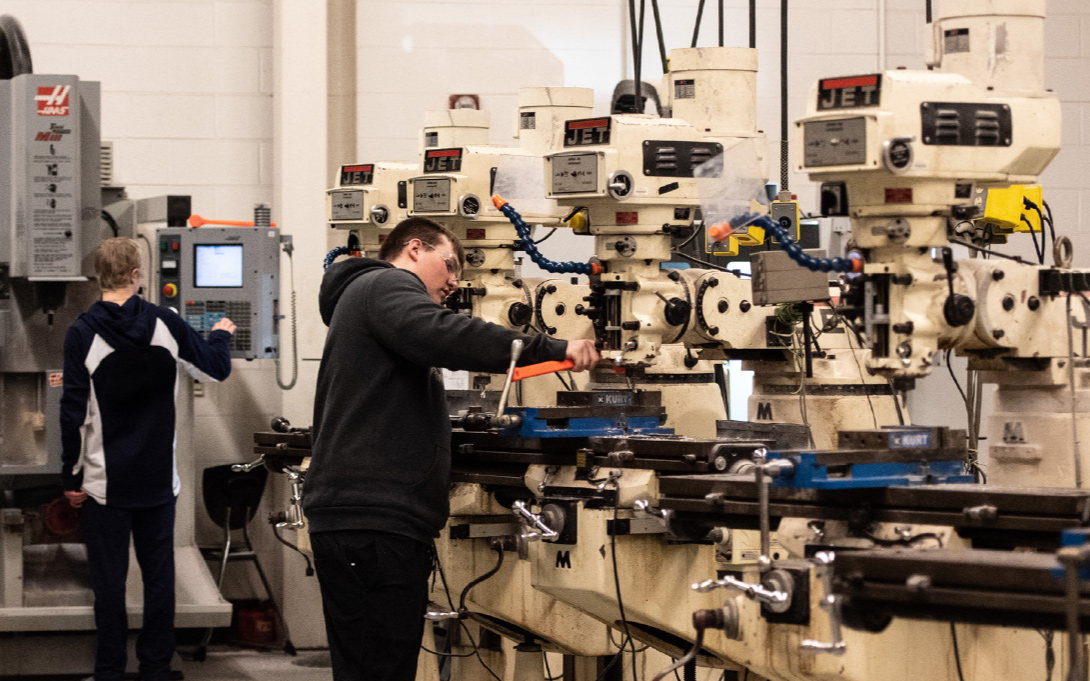
Significant inequalities in career and technical education access have been found across Washtenaw County school districts, according to a report by the Youth Policy Lab at the University of Michigan.
The analysis, titled "Inequities in CTE Access in Washtenaw County," scrutinizes the availability of career and technical education programs and underscores the difficulties economically disadvantaged students and students of color face in accessing these vital educational opportunities.
"Access to career and technical education in Washtenaw County is limited. Compared with state averages, students here have access to fewer programs," said lead author Brian Jacob, the Walter H. Annenberg Professor of Education Policy at U-M.
Key Findings:
- Limited overall access: Students across all demographic groups in Washtenaw County generally have access to fewer CTE programs compared to the statewide average of 13.8.
- Inequitable access: Economically disadvantaged, Black and Hispanic students have access to fewer CTE programs on average compared to their more affluent and white peers.
- District-dependent access: The availability of CTE programs is heavily influenced by the specific district and school a student attends. Economically disadvantaged, Black and Hispanic students are less likely to have CTE programs available at their schools.
- Disparities in high-demand programs: Access to high-skill, high-wage and in-demand CTE programs is uneven across districts.
- Consortium advantage: Students in districts that are part of the South and West Washtenaw Consortium benefit from greater access to CTE programs than those in districts outside the consortium.
The report provides insights into the unique CTE landscape of Washtenaw County. Unlike many other communities in Michigan, Washtenaw County does not fund its CTE programs through a countywide millage. Instead, local districts either operate programs independently or collaborate through consortium-based agreements, leading to sharp divisions in student access.
Data for the study was primarily drawn from the 2017-18 academic year and supplemented with additional figures from the 2022-23 academic year to provide updated context. Although overall CTE program access has improved since 2017-18, significant disparities remain, Jacob says.
Proposed strategies:
- Unifying CTE entities or systems to develop a cohesive approach across the county.
- Creating more opportunities within comprehensive high schools and at neutral site locations.
- Addressing transportation and scheduling barriers to improve student access to CTE programs.
- Considering new funding models.
The report suggests that any solutions should focus on increasing both access and enrollment, particularly for underserved populations. Additionally, aligning CTE offerings with high-demand, high-wage occupations in the region is crucial for maximizing economic benefits for students.
The report also emphasizes that access to training for jobs with the highest labor market demand and earning potential is highly segregated across the county.
"To the extent that participation in a CTE program might make it more likely that a student will secure a job in that field, these results suggest that the distribution of CTE programming in Washtenaw County serves as a barrier to equitable economic opportunity," Jacob said.
Washtenaw ISD is currently planning a series of working groups to gather input from community members as they design an ideal countywide CTE system. If you are interested in participating in these discussions, contact WISD CTE Director Ryan Rowe at [email protected].
The Youth Policy Lab at the University of Michigan conducts applied research in collaboration with policymakers and practitioners to enhance outcomes for Michigan youth. This report is part of their ongoing efforts to provide data-driven insights that inform public policy decisions.
Report: Inequities in CTE Access in Washtenaw County
Written by Juan Ochoa, Michigan News
